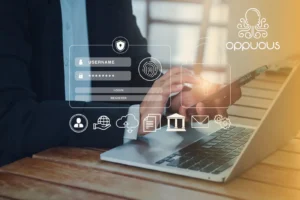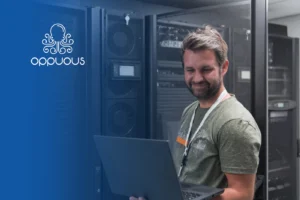How can K-12 educational institutions strengthen security and make it cost effective? Supporting and protecting students, staff and visitors’ safety through monitoring solutions, preventing vandalism, and providing incident protection remains a challenge in the K-12 sector, to be certain. But it is also the number one priority. While schools would like to enhance their surveillance systems, doing so is often prohibitively expensive and requires them to replace old infrastructure.
Oppous’ Solution providers are familiar with the issues faced by public education systems. For this reason, we often solicit the input of K-12 school leaders into developing our new technologies. Oppuous’ Solutions offer four strategies to optimize surveillance cameras and transform K-12 security measures from reactive to proactive, all while offering affordability.
Installing Secure and Efficient Surveillance Cameras at K-12 Schools
K-12 schools typically use video surveillance cameras in gymnasiums, classrooms, lobbies, parks, playing courts, and administrative offices to monitor various locations and facilities. Physical security breaches on K-12 campuses, such as theft, vandalism, violence, and traffic infractions, can be discouraged by installing cameras. If not, the cameras can give forensic proof in case of an accident or a medical emergency.
Video cameras record a wealth of useful information that administrators may use to improve safety and efficiency in the classroom and around the school. Video data can be used for real-time alerts, improving situational awareness, response speed, and security by revealing trends and patterns.
Manually reviewing video footage is excessively time-consuming and prone to human error. Therefore, most footage is never used. This essential video metadata can be quickly extracted, identified, classified, and indexed by AI and Deep Learning-powered video content analytics software which then presents the data in a way that makes it accessible, usable, and quantifiable.
Enhancing Speedy Investigations
Security staff and, in certain cases, local law enforcement examine surveillance footage after a criminal, medical, or disruptive occurrence occurs on campus. Since video content analytics allows for highly specific searches and filters, investigators can quickly narrow their focus to the most pertinent video footage, saving them time and energy.
Camera footage can be reviewed by system administrators while factoring in several criteria. It could be the presence of specific classes of objects (such as vehicles or people), specific attributes (such as speed, trail, direction, and durations), and similarity measures (such as facial recognition and license plate recognition). If a student goes missing, the system might filter video from several cameras based on physical resemblance or facial recognition. They could limit the video review to instances of “female, child, red upper wear, blue lower wear” or the child’s face. The institution can track student movements and pinpoint their campus locations.
Using Real-time Notifications to Boost Situational Awareness
Video surveillance systems can boost situational awareness by sending notifications in real time. Another way to find the student is to set up real-time notifications for face detection or physical resemblance filters. Officers tasked with maintaining order in schools need access to timely, accurate information on what’s happening on campus at any given moment. The operator can set up a video management system to notify of abnormal scene activity.
Among the many potential alarms based on real-time video analytics are the following:
- Random Lighting Alerts at Night. For instance, the system can notify the surveillance operator if a light is switched on or off in a designated area, such as a classroom, gym, or office, outside normal business hours.
- People/Object Count Thresholds. Occupancy alerts based on people counts make it possible to monitor and control space usage on a school campus. When a large group of students congregates in one area, the system can detect this and send an immediate alert to the appropriate personnel. This helps keep an eye on foot traffic in crowded indoor and outdoor corridors and stops fights from breaking out. Encouraging and enforcing physical distancing is especially important for schools reopening after the COVID-19 outbreak or any public health crisis.
- Dwell Time. The video surveillance team can set a time threshold to detect unusual activities, such as lingering individuals or objects for an abnormally long time. Such thresholds can help them respond proactively to an emergency. Such long dwelling times could be medical emergencies or threats to which the security team could respond quickly.
- Facial Recognition. Security cameras help recognize the faces of people who have been flagged as suspects or barred from authorized individuals. Face recognition technology might be used by schools to keep tabs on visitors and identify strangers. Security personnel can set up face recognition alerts to notify them whenever an adult who isn’t on the approved visitor list enters the premises. After getting this signal, the security camera operator can examine the situation in real-time to determine if intervention or closer surveillance is needed to ensure school safety. The video analytics operator can set up a similar blocklist of people not allowed on campus.
Tracking Vehicle Plates. The security team can check automobile license plates against a database to determine whether or not they belong to a restricted category. Suppose school officials are looking for specific license plate because of a history of incidents involving that vehicles. In that case, they can add those plates to a “watchlist.” The video surveillance system will immediately alert the surveillance system’s operators if any of those plates appear in a camera feed.
Trend Data Visualization to Enhance Future Planning
Instead of receiving immediate alerts, school administrators who use video analytics can access several data visualizations, such as graphs, heatmaps, and histograms. School officials and security officers often require visuals of campus traffic to identify problem areas and take corrective action. Administrators can use quantitative data to analyze school trends and make more informed decisions based on hard numbers rather than anecdotal evidence. There will be fewer cars on the roads, fewer people in the classrooms, happier parents and teachers, and an overall safer setting.
Using Video Surveillance Analytics To Monitor Compliance with Covid-19 Regulations.
Compliance with public health measures, such as social distancing and wearing masks, is an urgent new use for surveillance cameras and analytics brought on by the COVID-19 pandemic, as well as the recent rise of the flu and the drastic uptock in RSV (respiratory syncitial virus).
The use of video intelligence software can facilitate contact tracing by making forensic video analysis possible. Face recognition and similarity filters can be applied to videos to track down specific people, making it simple to piece together the infected person’s whereabouts and the people they came into contact with.
Let’s say a student or faculty member was diagnosed and provides a digital image of themselves to the school. The institution could easily search all camera footage over the predefined timeframe to determine if the individual had been in touch with other people in the school and, if so, for how long. While maintaining the diagnosed student’s privacy, the institution can inform those who may have been exposed so they can self-quarantine if this is recommended. Those who haven’t been in close contact with a recently diagnosed person can also be eliminated by the technology, giving them peace of mind.
Our cameras have proximity identification features that can quantify and analyze interpersonal distances over a specified span of time and within a specific location. This helps pinpoint particular people who are non-compliant with social distancing requirements. Such data can help the school officials take necessary actions to curb such tendencies.
Wrap Up
Oppuous provides advanced AI cameras and comprehensive video surveillance system, developed with input from K-12 school officials, can help improve existing surveillance infrastructure. Oppuous Solutions can solve any campus security problem by supplying a comprehensive security system that is flexible, scalable, and user-friendly, all at a low total cost of ownership.
Contact us today for more information. via phone at 720 702 TECH, via email at info@oppuous.com, or schedule a call directly at: https://letsmeet.io/oppuousllc/15-minute-initial-consultation









